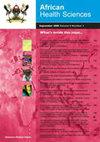Malignancy-related mir-210, mir-373 and let-7 levels are affected in iron deficiency anemia
IF 0.9
4区 医学
Q3 MEDICINE, GENERAL & INTERNAL
引用次数: 0
Abstract
Background: Hypoxia is the hallmark of iron deficiency anemia (IDA) and in hypoxic environment, significant changes are observed in malignancy-related microRNAs (miRNA). Our aim is to examine whether there is any difference in the levels of miR-210, miR-373 and let-7, which are directly related to malignancies in patients with IDA. Methods: Thirty-five female patients with IDA between the ages of 18-65 and 10 healthy controls were included in the study. Patients who received oral iron therapy, who had inflammatory disease, and who were pregnant were excluded from the study. Student t Test was used for comparing variables with normal distribution in two independent groups, and Mann-Whitney U Test was used for variables without normal distribution. Comparison of categorical data was made using the chi-square test. Results: The mean hemoglobin and ferritin level were 10,78±0,93 and 6.28±5,76 respectively. Plasma miR-210 expression were found as -7.27±2.23 and -6.15±0,88 in IDA and control group respectively (p = 0.022). Plasma miRNA-373 were -7.36±2,58 and -6,96±1,93 and let-7 expression were 2.14±2,15 and 3,57±2,21 in IDA and control group. (p = 0.65 and p = 0.20, respectively). Conclusions: Plasma miR-210 expression was significantly up-regulated and miR-373 and let-7 expression was down-regulated, though insignificantly, in IDA group. Keywords: miRNA; iron deficiency anemia; malignancy.恶性肿瘤相关的mir-210、mir-373和let-7水平在缺铁性贫血中受到影响
背景:缺氧是缺铁性贫血(IDA)的标志,在缺氧环境下,恶性肿瘤相关的microrna (miRNA)发生显著变化。我们的目的是研究在IDA患者中与恶性肿瘤直接相关的miR-210、miR-373和let-7的水平是否存在差异。方法:选取35例18 ~ 65岁女性IDA患者和10例健康对照者作为研究对象。接受口服铁治疗、患有炎症性疾病和怀孕的患者被排除在研究之外。两个独立组中符合正态分布的变量采用Student t检验,不符合正态分布的变量采用Mann-Whitney U检验。分类数据比较采用卡方检验。
结果:血红蛋白和铁蛋白平均水平分别为10、78±0.93和6.28±5.76。miR-210在IDA组和对照组的血浆表达量分别为-7.27±2.23和-6.15±0.88 (p = 0.022)。IDA组和对照组血浆miRNA-373分别为-7.36±2,58和-6,96±1,93,let-7分别为2.14±2,15和3,57±2,21。(p = 0.65, p = 0.20)。
结论:IDA组血浆miR-210表达显著上调,miR-373和let-7表达下调,但差异不显著。
关键词:microrna的;缺铁性贫血;恶性肿瘤。
本文章由计算机程序翻译,如有差异,请以英文原文为准。
求助全文
约1分钟内获得全文
求助全文
来源期刊

African Health Sciences
MEDICINE, GENERAL & INTERNAL-
CiteScore
2.30
自引率
0.00%
发文量
179
审稿时长
>12 weeks
期刊介绍:
The African Health Sciences is an internationally refereed journal publishing original articles on research, clinical practice, public health, policy, planning, implementation and evaluation, in the health and related sciences relevant to Africa and the tropics. Its objectives are to: Advocate for and promote the growth of reading culture in sub Saharan Africa; Provide a high quality journal in which health and policy and other researchers and practitioners in the region can and world wide, can publish their work; Promote relevant health system research and publication in the region including alternative means of health care financing, the burden of and solution of health problems in marginalized urban and rural communities amongst the displaced and others affected by conflict; Promote research and the systematic collection and collation and publication of data on diseases and conditions of equity and influence; Promote development of evidence-based policies and guidelines for clinical, public health and other practitioners. African Health Sciences acknowledges support provided by the African Health Journals Partnership Project that is funded by the US National Institutes of Health (through the National Library of Medicine and the Fogarty International Center) and facilitated by the Council of Science Editors.
 求助内容:
求助内容: 应助结果提醒方式:
应助结果提醒方式:


